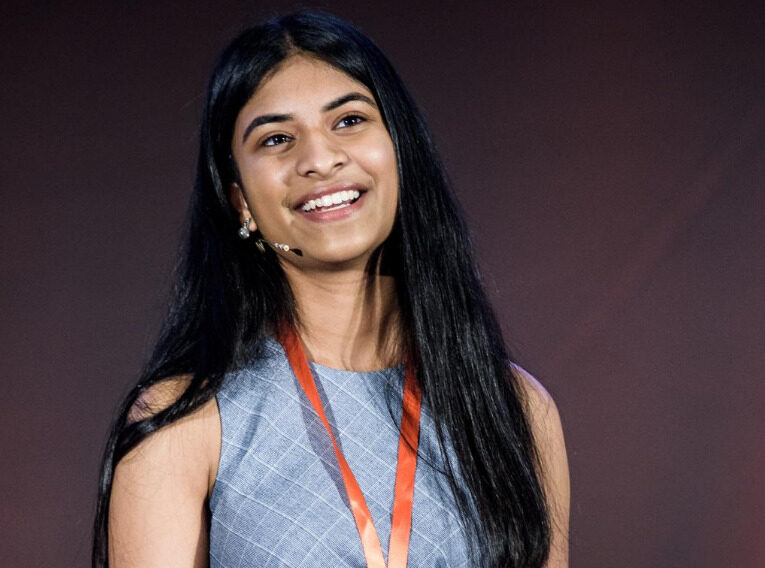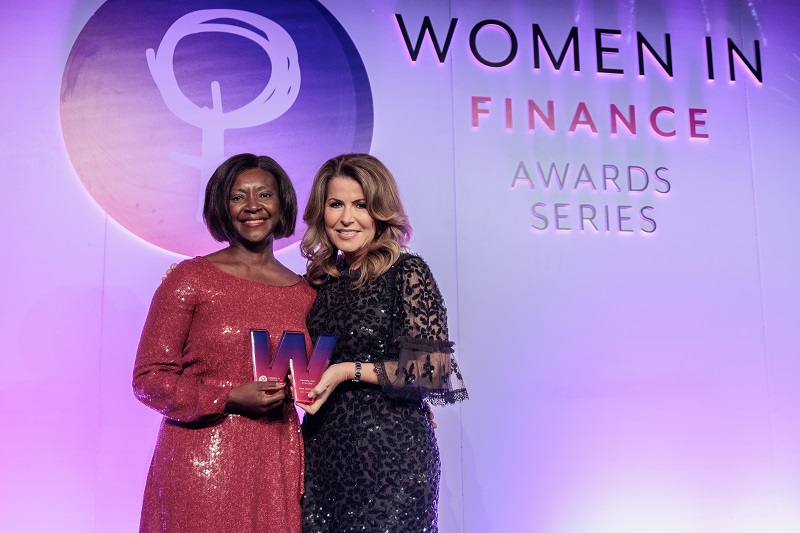Having launched multiple social-impact businesses, such as SmartCane, an electronic travel aid that helps detect physical obstacles for visually impaired people, and bagged consultancy work with tech multinationals like Microsoft, all while still in her teens, Riya Karumanchi has more business experience and more to say about what makes tech firms inclusive than most business leaders twice her age. Here, she speaks to DiversityQ about effective CSR, recruiting Gen Z talent, and empowering girls to take STEM seriously.
Why did you want to work at the intersection of health technology and marginalised communities?
While the quality of life has been growing exponentially, thanks to advancements in technology and science, that change has not been distributed equally to all groups of people worldwide. It has largely been concentrated in select areas that experience the majority of the benefits of this progress. It is crucial we improve the quality of life of those being left behind.
Your ethnicity, genetics, and place of birth should never be a determinant factor for a healthy life. What excites me the most about technologies like computer vision augmented reality is their ability to bring advanced health care and innovations to communities in remote areas to help improve quality of life.
Have you ever faced discrimination due to your gender, age, or ethnicity in the tech sector?
While I have not faced a lot of discrimination due to my gender or ethnicity, my age, especially when starting out, posed some challenges. It was difficult to be taken seriously at age 14 with startup ideas at networking events and pitch competitions when chatting with individuals and recruiting people to join my team.
However, what helped me was remembering that a “no” isn’t so much of a bad outcome because you never know if that next person might show interest and say “yes”! Persevering and demonstrating credibility through my skills, passion, and the solution I was building helped me overcome the barrier of age and find people who were beyond supportive in my journey as an entrepreneur who I am so lucky to have met.
What innovation lessons has your startup and consultancy work taught you?
One of the biggest lessons I learned through consulting and building startups is that talking to your users and target market is the best thing you can do to build a product that adds true value and can drive change.
First, identify your knowledge gaps and determine the best person to give thoughtful feedback and raw experiences. What I usually do after that is set up as many meetings with these individuals as I can to uncover that information I don’t know and even discover surprising insights along the way!
If you’re a company looking to improve the customer experience for a specific product or service, there really is no better person to talk to than your customers themselves; show them that you truly care about their input and feedback so that their experience can be better. This can help more meaningfully understanding of the specific pain points someone experiences with the status quo. Having these organic conversations can get you thinking about creative and productive solutions that solve problems that matter and address something specific.
What should firms be avoiding when managing their CSR?
There are many types of bad CSR, although some of the main characteristics that stick out to me are performative and do not drive tangible action, merely words.
Another type of bad CSR that is seldom talked about is one that builds ‘solutions’ without consultation with end-users every step of the way, not just at the end. Rather than building solutions we think will work and help people, there are numerous cultural and social nuances that we may not fully understand. You want to iterate on solutions, welcome constructive criticism, incorporate feedback at each step, and build a product with users to build something that adds value for people.
What are the biggest recruitment and retention incentives firms can offer Gen Z talent?
Companies that embrace values that resonate with young people are the most likely to lead in recruitment and retention. The freedom to work on projects you are passionate about and goals advancing the interests of the company is one of the best methods I see in attracting young people.
Personally, I really admire Google’s 80/20 policy, which encourages employees to work on core projects 80% of the time, while dedicating 20% of their time to working on innovation projects that appeal to their passions and interests. Having the flexibility to work across different career verticals in a company, develop both depth and breadth in knowledge and skills, and use and explore various strengths is a characteristic that many young people, including myself, would appreciate.
One of the most important factors for retaining young people in an organisation is the team you are surrounded with. It is crucial to be intentional about who you hire and how they are as people. Joyful, supportive, collaborative, and creative atmospheres that embrace diversity and intellectual vitality are ones young people will certainly gravitate towards and value.
Lastly, mentorship from role models who truly want to invest in your success and care about your wellbeing programmes many young people like myself look for in companies.
Some of the factors that can put Gen-Zs off when it comes to choosing a company to work for are those with toxic work cultures with politics, a lack of focus on community building and bonding, isolated work environments with little collaboration, repetitive jobs, poor work-life balance, and lack of understanding and appreciation for the person behind the employee.
What changes in the global education system could encourage more girls to take STEM subjects?
Despite the fast pace of change we’ve seen around the world on a technological front that will likely transform our way of life and approaches to learning, innovation, and more, the education system has not reformed accordingly to keep up with these changing landscapes.
To thrive in the future and be a part of this change, it is important that young people are taught about technology and STEM to focus on how it can be leveraged as a tool to solve important problems in the world.
One of the biggest barriers to having more young girls in STEM is the ambiguity surrounding what technology or a career in tech looks like. It is often reduced to stereotypes found in the media, often a male coding in a 9-5 job.
Courses that teach young people through gamification about the fundamentals of coding and circuitry and how they are not entities in themselves, but tools that can be used and incorporated into peoples’ unique passions, can be transformative in encouraging engagement in STEM in a fun way.
You’re about to start at Stanford University and take a degree in biomedical engineering and computer science; considering you are already a successful entrepreneur, why are you going?
It has been an amazing experience getting to lead and collaborate with amazing groups of people on the ventures I worked on over the past four years, taking products from just an idea to a product people can use. While I learned so much along the way, what made me more excited was how much more I had to learn and grow. I’m eager to take a deeper dive into computer science and bioengineering to better equip myself with the technical knowledge required to build innovative products spanning the two fields, go deeper into the key problems preventing further advancement in the space, and explore future projects with my peers at the University.
The students at Stanford are incredibly exceptional in a vast array of disciplines, be it music composition, mathematical physics, or earth sciences, and are some of the most amazing people I’ve had the privilege of meeting so far. The chance to learn from each other, build life-long relationships, embark on startup journeys together, and chat about topics ranging from energy options in the 21st century, philosophies, and our hobbies, excites me the most. I’m really looking forward to the next chapter of my life and the new experiences and knowledge that will come along the way.
You will speak at the Women in IT Europe Summit tomorrow. In your opinion, how effective are events such as WIT Europe in building a strong community of female tech thinkers?
When it comes to women in tech and connecting with other founders on similar journeys, events like WIT Europe are phenomenal for building relationships with peers and mentors you can get advice from, learn, and grow together. Supportive communities like these can help boost morale and confidence and help us navigate our unique journeys as we learn from and help one another.
To catch Riya at tomorrow’s free-to-attend 2021 Europe edition of the Women in IT Summit, register here.









